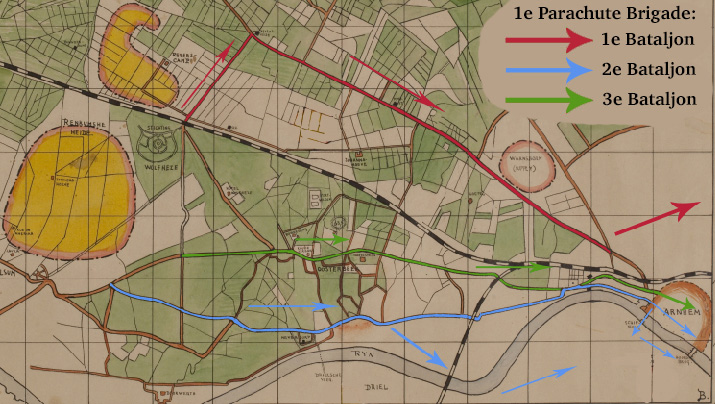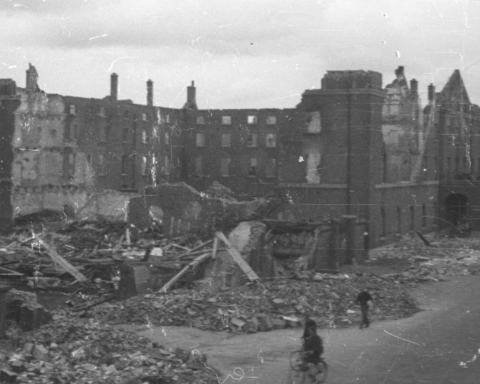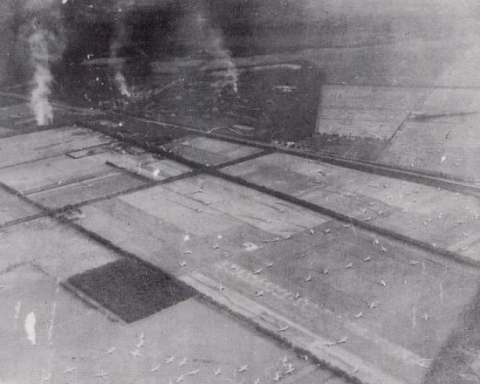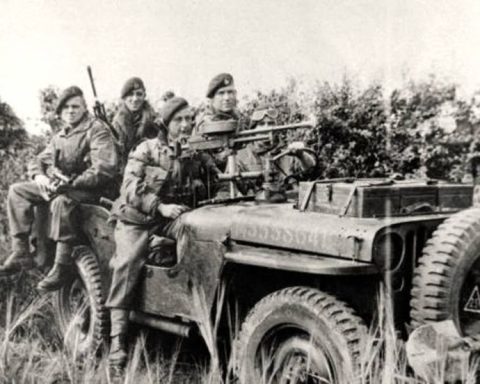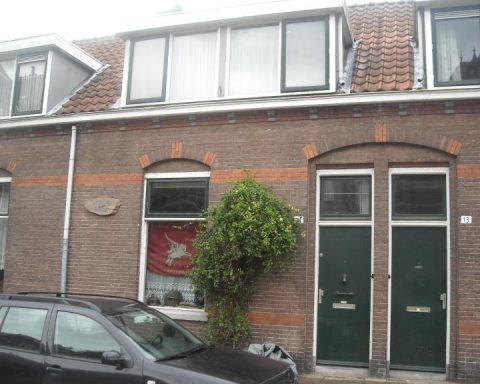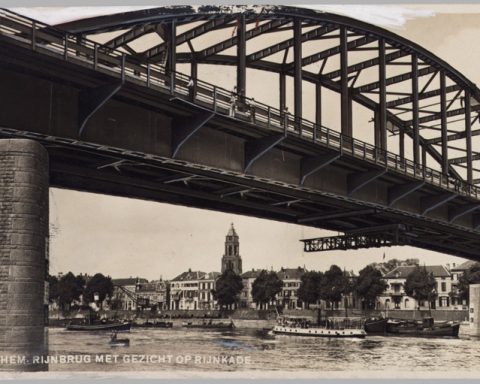More than 12,000 British and Polish airborne troops whose aim was to capture the Rhine Bridge near Arnhem in one day. That is pretty much the image that many people have about the purpose of the British airborne landings near Arnhem on September 17, 1944.
That is incorrect.
Because there were insufficient aircraft available, only 5,300 of the 12,000 Allied soldiers landed west of Wolfheze on Sunday, September 17, 1944. The rest of the airborne troops were expected to arrive on September 18 and September 19.
Because it was obviously necessary for the landing zones to be in British hands in connection with the landings on September 18 and 19, a large part of the troops had to stay behind after the landings of September 17 to protect the landing zones.
Only the First Parachute Brigade under General Lathbury was available to advance to Arnhem. The rest of the British troops were needed that first day to defend the landing zones against possible German attacks.
General Lathbury had approximately 2,700 soldiers at his disposal for the attack on Arnhem. According to the planners in England, this should be more than sufficient. According to them, Arnhem was defended by “children and old men”. Much German resistance was not expected.
The attack plan
The 1st Parachute Brigade consisted of three battalions and was supplemented for the occasion with scouts from the 1st Airborne Reconnaissance Squadron. The scouts from this squadron were instructed to race to the Rhine Bridge in jeeps immediately after landing to secure it before the Germans could blow up the bridge.
The three battalions each had their own route and their own task in conquering Arnhem. Lathbury had chosen this in order to be able to advance to Arnhem as quickly as possible.
By advancing via multiple routes, Lathbury hoped to avoid delays due to German resistance or other causes.
1st Battalion
The 1st Battalion led by Lieutenant Colonel David Dobie was ordered to advance via the ‘Leopard route’. This was the northern route via the Amsterdamseweg. The first battalion was given the task of taking a defensive position on the north side of Arnhem, to repel any German attacks.
The idea was that if the pressure of the German attacks became too high, the British would slowly withdraw towards the center. Things turned out very differently. The first battalion did not even come close to Arnhem.
3rd Battalion
The route of the 3rd Battalion, the ‘Tiger route’, ran via the Utrechtseweg. The troops led by Lieutenant Colonel John Fitch would have to set up a defensive position via the city center of Arnhem, east of Arnhem and north of the road bridge.
The third battalion of the Parachute Brigade got stuck on a defense line that the Germans had set up on the west side of Arnhem.
2nd Battalion
The 2nd Battalion led by Colonel John Frost was given the task of advancing to Arnhem via the southernmost route, the ‘Lion route’. The second battalion’s task was to capture three bridges over the Rhine.
First the railway bridge at Oosterbeek had to be conquered. Part of the second battalion would then advance via the south side of the Rhine to the next bridge in the list: the ship bridge in the city center of Arnhem. Together with the battalion that advanced via the northern bank of the river, the 1st Reconnaissance squadron ultimately had to be reinforced, which would then have already captured the Rhine bridge.
The railway bridge was blown up, the ship bridge was sailed away by the Germans, but Frost’s men managed to capture the northern side of the Rhine bridge.
Brigade HQ
The southern route was also the road that would be followed by the headquarters of the 1st Parchute Brigade. The troops from headquarters would arrive behind the soldiers of John Frost’s second battalion. The headquarters also aimed to take a position north of the bridge.
In addition to the brigade headquarters, the 1st Parachute Squadron, the headquarters of the anti-tank guns and the military police would also move with the headquarters in the direction of the city center of Arnhem.
The medics of the 16th Parachute Field Ambulance would remain behind at Elisabeth Gasthuis on the Utrechtseweg.
That was the plan of attack. According to a well-known statement, no military plan survives contact with the enemy. Market Garden is excellent proof of that statement.
The greatest weakness of Lathbury’s plan was that the battalions were too weak to overcome the relatively light resistance of the Germans. Because there were no reserve troops available to reinforce the battalions, this resistance was sufficient in the first hours to prevent two of the three battalions from reaching their objective.

